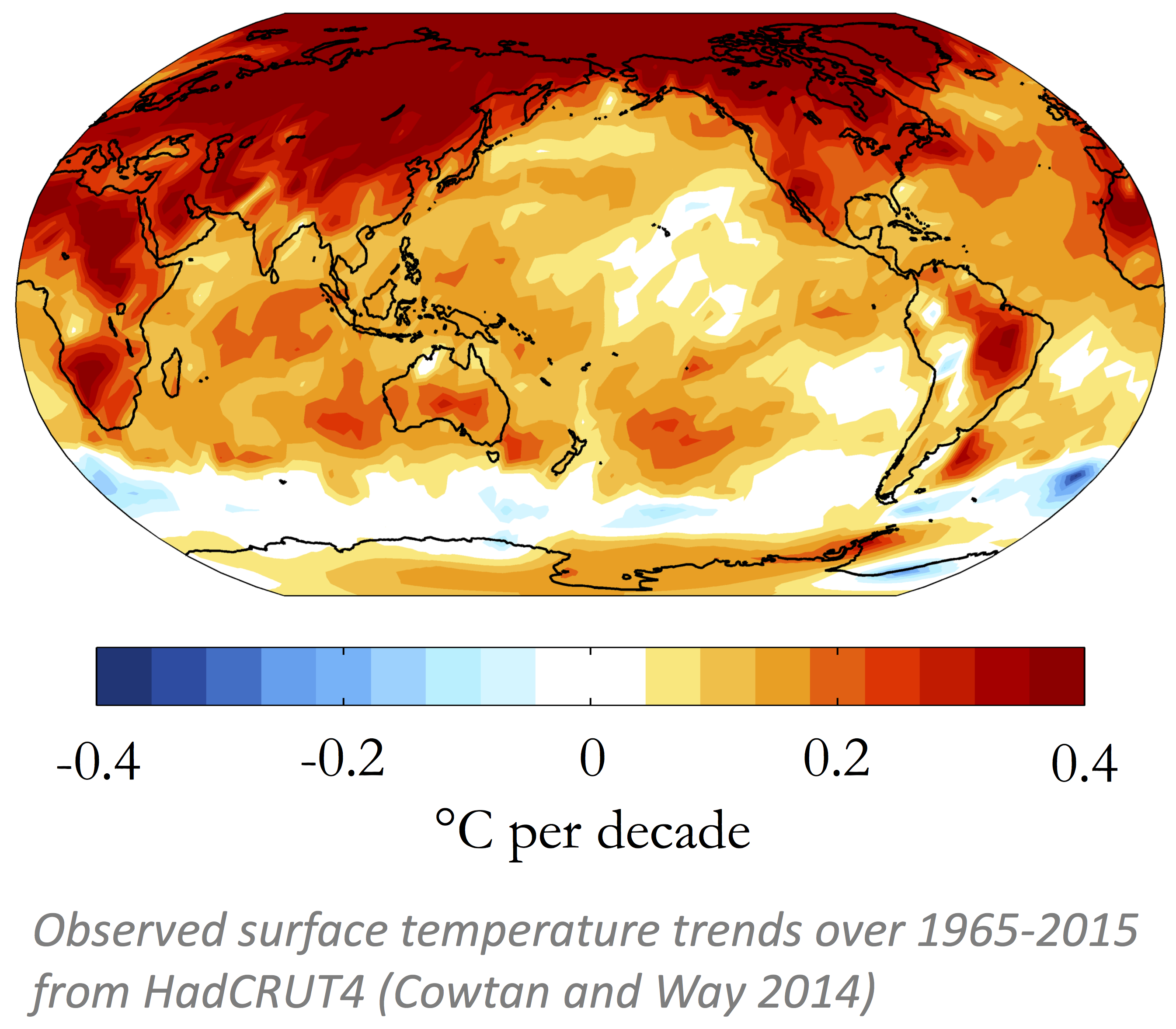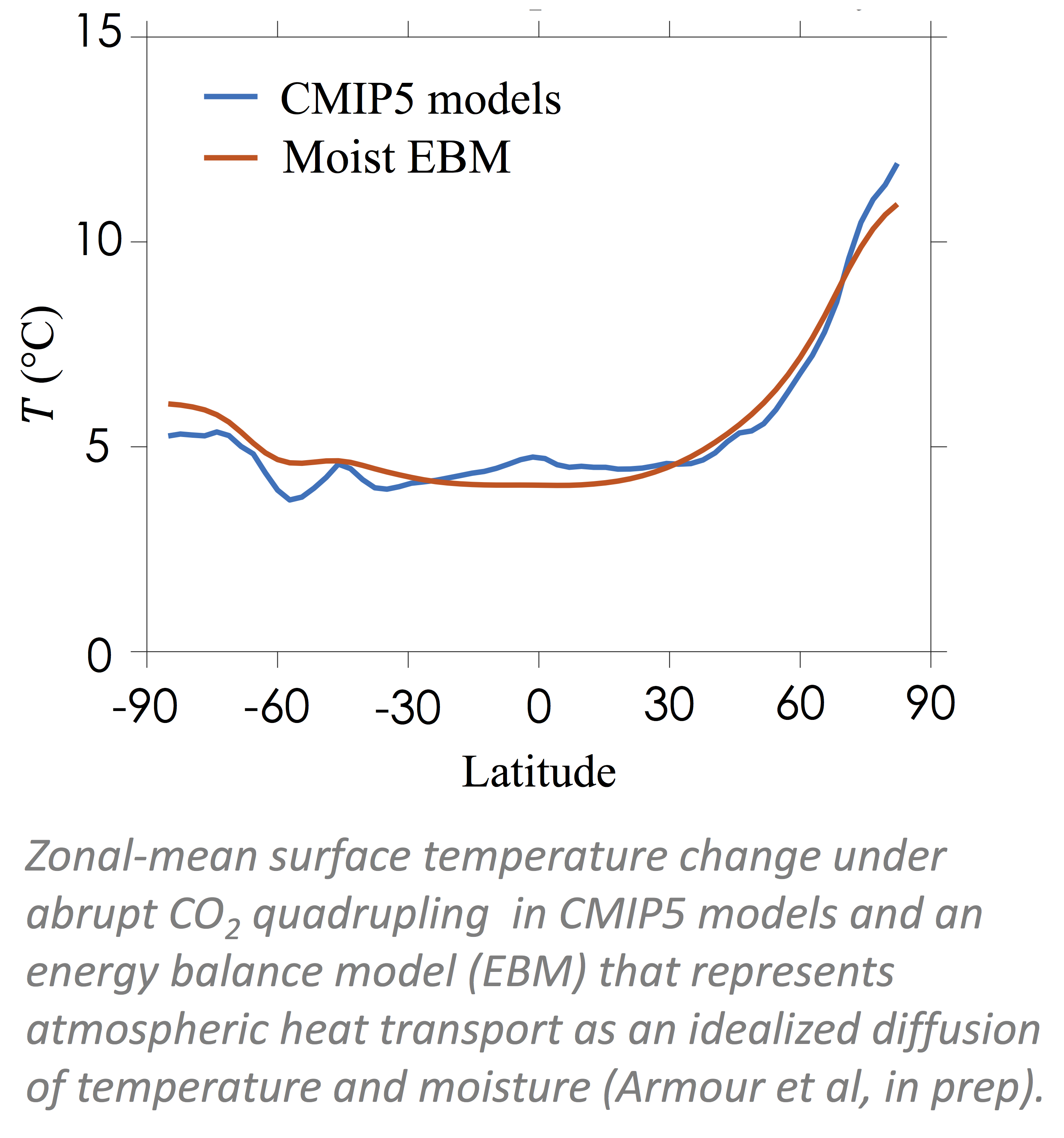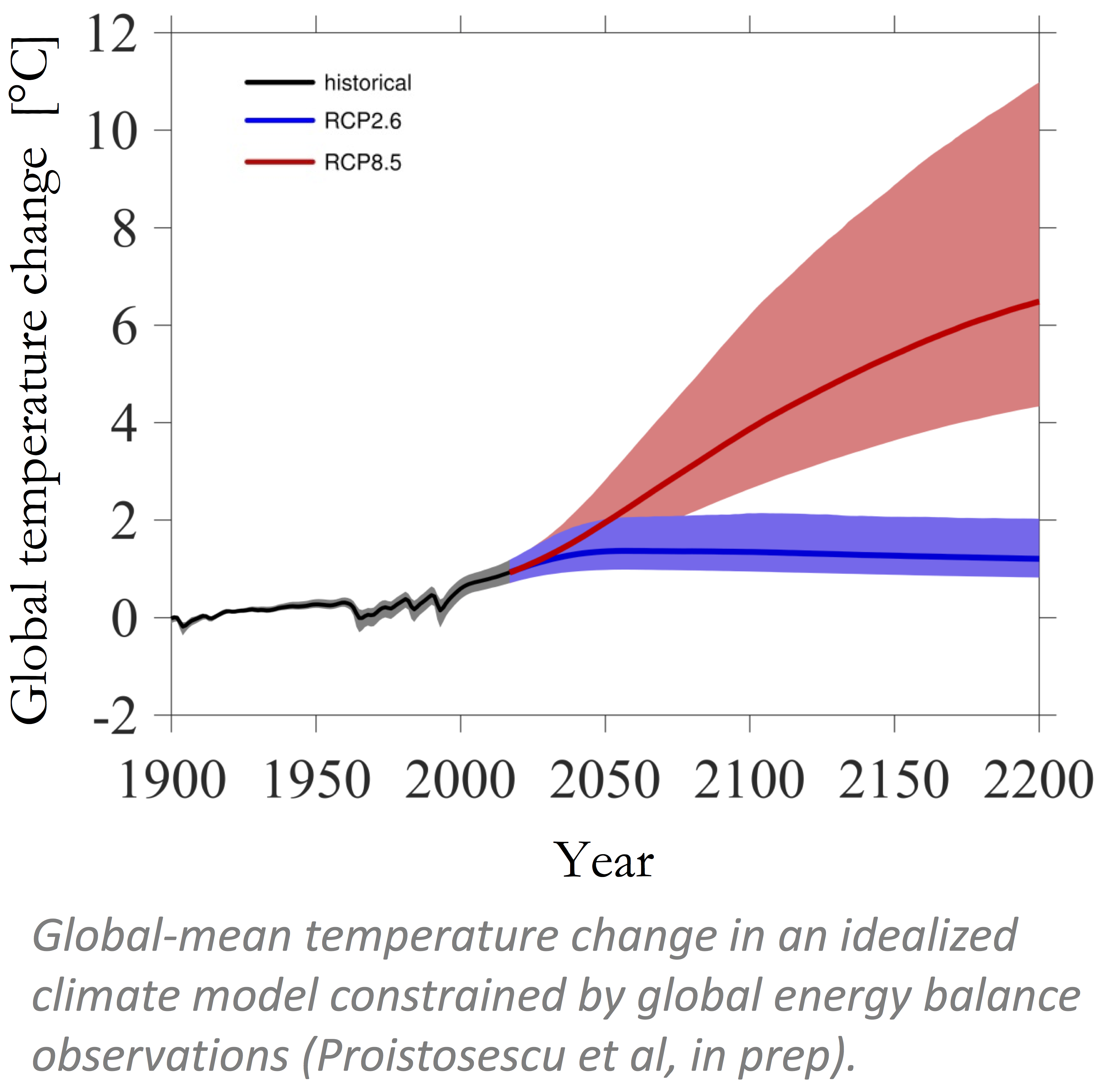 Oceans and Climate
Oceans and Climate
The oceans play a primary role in setting Earth’s climate and its changes. We use a range of tools — including comprehensive and idealized models and analysis of observations — to study the role of ocean circulation in climate dynamics. Recent and ongoing work examines: how ocean circulation contributes to differential rates of warming and sea-ice loss in the Arctic and Southern Ocean; the role of ocean dynamics in temperature variability in the Atlantic, Pacific, and Southern Oceans; and how continental configuration shapes ocean circulation, climate, and climate change. Recent papers on oceans and climate:
- Wills RC, KC Armour, DS Battisti and DL Hartmann (2018) Ocean-atmosphere dynamic coupling fundamental to the Atlantic Multidecadal Oscillation, submitted
- Kostov Y, DG Ferreira, KC Armour and J Marshall (2018) Contributions of greenhouse gas forcing and the Southern Annular Mode to historical Southern Ocean surface temperature trends, Geophysical Research Letters, 45, 1086–1097, doi: 10.1002/2017GL074964
- Kostov Y, J Marshall, U Hausmann, KC Armour, DG Ferreira and MM Holland (2017) Fast and slow responses of Southern Ocean sea surface temperature to SAM in coupled climate models, Climate Dynamics, 48:1595, doi: 10.1007/s00382-016-3162-z
- Armour KC, J Marshall, J Scott, A Donohoe and ER Newsom (2016) Southern Ocean warming delayed by circumpolar upwelling and equatorward transport, Nature Geoscience, 9, 549–554, doi: 10.1038/ngeo2731 [pdf]
 Radiative Feedbacks and Climate Sensitivities
Radiative Feedbacks and Climate Sensitivities
No single climate sensitivity governs the climate response to greenhouse gas forcing. The feedbacks that regulate Earth’s radiation to space in response to surface warming (and thus climate sensitivity) depend on the spatial pattern of that warming and timescale considered. As warming patterns evolve over time, so too does climate sensitivity. Because surface warming is coincidently slowed by oceanic processes in regions of positive (destabilizing) feedbacks, specifically in the eastern tropical Pacific Ocean and Southern Ocean, climate models predict that climate sensitivity will increase – by up to a factor of two – as warming in those regions catches up with greenhouse-gas forcing. Recent and ongoing work seeks to understand the mechanisms behind the scale-dependence of climate sensitivity, and to place observational constraints on how feedbacks will change in the future. Recent papers on feedbacks and climate sensitivity:
- Proistosescu C, A Donohoe, KC Armour, GH Roe, MF Stuecker and CM Bitz (2018) Radiative feedbacks from stochastic variability in surface temperature and radiative imbalance, submitted
- Po-Chedley S, KC Armour, CM Bitz, MD Zelinka, BD Santer and Q Fu (2018) Sources of intermodel spread in the lapse rate and water vapor feedbacks, Journal of Climate, doi: 10.1175/JCLI-D-17-0674.1
- Haugstad AD, KC Armour, DS Battisti and BEJ Rose (2017) Relative roles of surface temperature and climate forcing patterns in the inconstancy of radiative feedbacks, Geophysical Research Letters, 44, 7455–7463, doi: 10.1002/2017GL074372 [pdf]
- Armour KC (2017) Energy budget constraints on climate sensitivity in light of inconstant climate feedbacks, Nature Climate Change, 7, 331-335, doi: 10.1038/nclimate3278 [pdf]
 Mechanisms governing the patterns of climate change
Mechanisms governing the patterns of climate change
The spatial structure of climate change is set by the interplay between climate forcings, radiative feedbacks, ocean heat uptake, and atmospheric heat transport. We study the relative importance of each using climate model hierarchies in conjunction with idealized energy balance models representing atmospheric heat and moisture transport. Recent and ongoing work seeks a better understanding of the sources of uncertainty in the spatial structure of climate response, the drivers of changes in atmospheric heat transport, and the pattern of hydrologic cycle changes with warming. Recent papers on the pattern of climate change:
- Siler N, KC Armour and GH Roe (2018) Insights into the zonal-mean response of the hydrologic cycle to global warming from a diffusive energy balance model, submitted
- Siler N, GH Roe, KC Armour and N Feldl (2018) Revisiting the surface energy perspective on the sensitivity of global precipitation to climate change, submitted
- Roe GH, N Feldl, KC Armour, Y-T Hwang and DMW Frierson (2015) The remote impacts of climate feedbacks on regional climate predictability, Nature Geoscience, 8, 135-139, doi: 10.1038/ngeo2346 [pdf]
- Marshall J, J Scott, KC Armour, J-M Campin, M Kelley and A Romanou (2015) The ocean’s role in the transient response of climate to abrupt greenhouse gas forcing, Climate Dynamics, 4, 2287–2299, doi: 10.1007/s00382-014-2308-0 [pdf]
 Integrating models and observations for improved climate prediction
Integrating models and observations for improved climate prediction
We are working to characterize and improve global and regional climate predictability using idealized models that replicate the behavior of the coupled climate system but have the ability to formally assimilate observations in a Bayesian framework to constrain future climate. Current and ongoing work seeks to incorporate multiple sources of evidence (such as instrumental and proxy data, and climate model output) and to account for multiple forms of uncertainty (such as natural variability, observational error, and model error). Recent papers on integrating models and observations:
- Armour KC (2017) Energy budget constraints on climate sensitivity in light of inconstant climate feedbacks, Nature Climate Change, 7, 331-335, doi: 10.1038/nclimate3278 [pdf]
- Armour KC and GH Roe (2011) Climate commitment in an uncertain world, Geophysical Research Letters, 38, L01707, doi: 10.1029/2010GL045850 [pdf]
